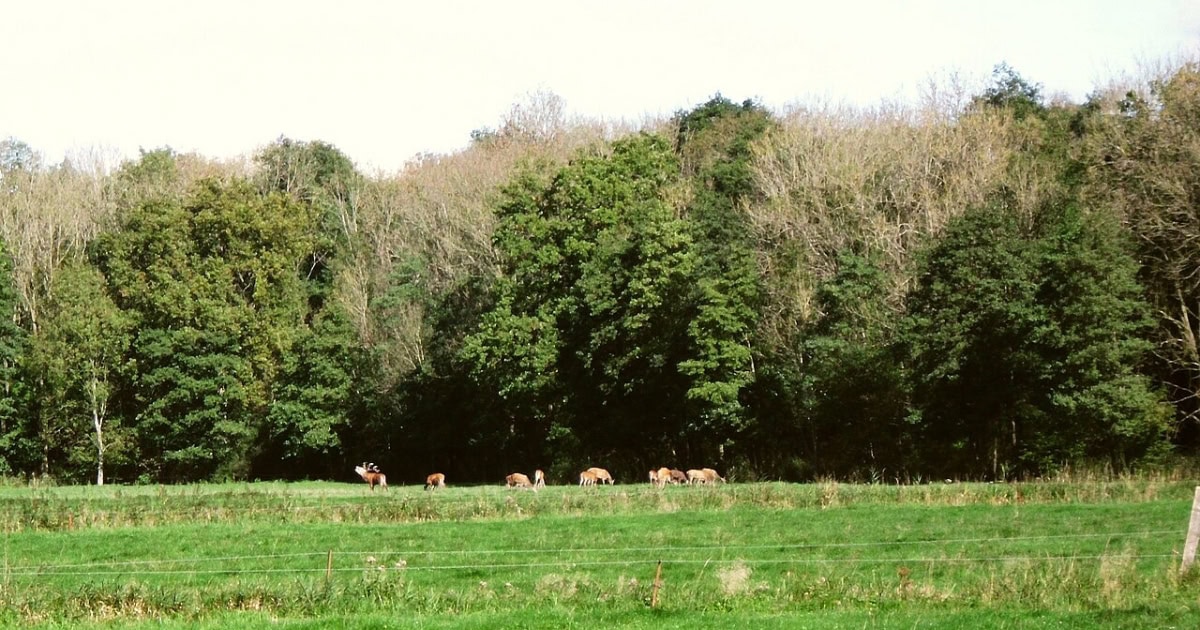Ash dieback identification and diagnosis: crown dieback staging systems and how consultants assess severity

Introduction
Ash dieback is now a familiar sight across the North West. Thin tops. Dead flags in the crown. The odd green spray lower down trying to fill the gaps. Getting the diagnosis right matters, but what you do next matters more. That is where crown dieback staging and a structured risk view come together for clear decisions.
Ash dieback is a fungal disease of ash (Fraxinus) caused by Hymenoscyphus fraxineus. It leads to leaf loss, twig and branch dieback, and in many cases structural decline. Forest Research provides the most complete overview for the United Kingdom, including clear identification cues and survey timing. Forest Research
We will walk through the four widely used crown classes, show how a professional applies the International Society of Arboriculture’s Tree Risk Assessment Qualification method, and translate both into plain actions for gardens, roadsides and public rights of way in the North West. Government guidance for England was last updated on 17 January 2025; the signposts and permissions below align with that. GOV.UK
Crown dieback staging (ash dieback disease stages)
Many consultants and local authorities use a simple four-class system based on how much live crown remains. It is fast to apply in the field, easy to repeat, and it helps owners decide what to do next. The Tree Council
Class 1 — 100 to 76 percent live crown
The canopy looks full to slightly thin. There may be minor tip dieback. Typical action: keep the tree and monitor on a routine cycle.
Class 2 — 75 to 51 percent live crown
You will notice patchy upper-crown thinning and obvious dead twigs. Epicormic shoots often appear lower down as the tree tries to compensate. Typical action: increase inspection frequency; prune deadwood if there are targets below.
Class 3 — 50 to 26 percent live crown
Large bare sections are now visible. Deadwood builds, especially in the upper crown, and the timber behaves more brittle as decline progresses. Typical action: consider reduction or removal where there are targets; rope access can become unsafe and a mobile elevating work platform may be required. The Tree Council
Class 4 — 25 to 0 percent live crown
Very sparse canopy with dead tops and extensive dieback. In many settings removal is the right choice, particularly where people or vehicles pass beneath. The Tree Council
Practical line: If your tree looks Class 3 or Class 4 and overhangs a route people use, book a survey.
What does ash dieback look like? Signs, season and one “ash dieback lookalike”
Leaves and shoots (summer): blackening starts at the midrib and moves outward; leaflets wilt and sometimes hang on. Premature leaf drop is common. These symptoms are easiest to confirm in July through September rather than during normal autumn colour. Forest Research
Twigs and branches: dieback advances from shoot tips into twigs and then small branches. You may see distinct “flags” — bare, skeletal sprays beside otherwise green material. Woodland Trust
Lesions at nodes: look for sunken, dark, often diamond-shaped cankers where a side branch meets the stem. These lesions can girdle the twig or stem over time. Forest Research Woodland Trust Cornwall Council
On the ground: in late summer and autumn, the fungus produces tiny white, cup-shaped fruiting bodies on fallen leaf stalks in the litter. Seeing these supports the diagnosis on sites with a history of infection. Woodland Trust
Basal problems and brittleness: some trees develop lesions near the base. Forest Research notes that ash affected by ash dieback can also become hazardous due to honey fungus at the roots, even when crown dieback is not advanced. The working takeaway is simple: do not equate a still-green crown with a safe base. Forest Research
One “ash dieback lookalike” to keep in mind: drought scorch and general decline can mimic tip death. The diamond-shaped lesions at last year’s nodes and the high-summer timing help separate true disease from lookalikes. Woodland Trust
Two checks you can try today (from the ground):
- Photo comparison: stand in the same spot and compare photographs from July this year and July last year. Persistent thinning at the very top and repeated “flag” sprays suggest progression. Woodland Trust
- Node scan: with binoculars if needed, examine branch junctions for those dark, diamond-shaped lesions centred on last year’s nodes. Forest ResearchCornwall Council
Practical line: If you can see diamond-shaped lesions and a thinning top in mid-summer, book an identification visit.
From stage to risk: how consultants use the Tree Risk Assessment Qualification
A competent assessor does more than name a class. We combine stage with a structured view of risk drawn from the International Society of Arboriculture’s training and best-practice forms. That method weighs three things:
- Likelihood of failure (how likely the part is to fail),
- Likelihood of impact (how likely the failure would hit a person or object), and
- Consequences of failure (what would happen if it did).
The method uses a matrix to combine the two likelihoods and then weighs the outcome against the consequences. This is the framework many United Kingdom consultants use to turn observations into a clear rating and a set of options. wwv.isa-arbor.com+1
Local context matters. In the North West we often see roadside belts on clay soils, ash on windy coastal fringes around the Mersey and Ribble, and lines of trees beside public rights of way over wet ground. The likelihood of impact score changes sharply between a quiet rear garden and a bus route. The consequences change between a fence panel and a school entrance.
Practical line: If there are frequent targets beneath your ash, ask your consultant to include a written risk rating using the International Society of Arboriculture method. wwv.isa-arbor.com
Grounded examples from recent North West visits
Driveway in Altrincham — Class 2
A mature ash shaded a narrow drive. The upper crown was thin; the lower crown was filling with epicormic shoots. No basal lesions; limited target exposure apart from occasional van deliveries. We reduced end-weight on two laterals, removed deadwood, and set an eighteen-month monitoring interval. The tree still provides privacy and shade.
Garden boundary in Prestwich — Class 3
A twin-stem ash leaned over a garden path that links directly to a public right of way. A dead top was present; two mid-crown nodes showed classic diamond-shaped lesions. Using the tree risk method, we scored likelihood of failure as “likely” and impact as “high” because of regular public access. The decision was a controlled dismantle in a dry-weather window with a mobile elevating work platform, followed by replanting with small-leaved lime and field maple better suited to heavy clay. Guidance notes from the Tree Council support this link between late-stage crowns and more hazardous working conditions. The Tree Council
Practical line: If a Class 3 ash leans over a route people must use, plan works ahead of next summer’s leaf flush.
Permissions, timing and good practice for owners
Permissions still apply. In England, felling a diseased ash usually requires a felling licence unless the tree is dead or poses a real and immediate danger. Tree Preservation Orders and Conservation Area rules continue to apply. Keep dated photographs and written notes to support decisions. The Government guidance page summarises the process and links to further detail. GOV.UKcdn.forestresearch.gov.uk
Retain where safe. Some ash trees show tolerance. Government guidance encourages owners to retain evidently healthier ash where it is safe to do so in order to support future populations. That approach protects amenity and genetics while still managing risk. GOV.UK
Work windows. Identification is clearer in summer when leaves are on. Access on clay tracks can be worse in winter. Late-stage trees are often brittle and behave differently under load; that changes how crews work and may require machinery rather than climbing. Recent guidance for ash works underscores these safety realities. The Tree Council
Practical line: If you suspect Class 3 or Class 4 and there is a Tree Preservation Order, call a consultant before you do anything else.
Quick summary
- Stage it: use the four classes by remaining live crown to track condition over time. The Tree Council
- Confirm the signs: look for diamond-shaped lesions at nodes and mid-summer thinning at the top of the crown. Forest ResearchWoodland Trust
- Turn stage into action: combine stage with a risk view that weighs likelihood of failure, likelihood of impact and consequences of failure. wwv.isa-arbor.com
- Act proportionately: retain safer, healthier trees where it is safe; prioritise works where targets are beneath late-stage crowns. GOV.UK
- Mind the paperwork: licences and permissions still apply even when disease is present. GOV.UK
Local notes for North West owners
Wet summers, clay soils and coastal exposure shape how ash dieback reads on site. On Manchester clays, end-weight on long lateral limbs can combine with poor soil structure to increase branch shedding. Along the coast, wind exposure adds load to already weakened tops. On public rights of way across wet ground, even modest Class 2 trees can carry higher likelihood of impact because footfall concentrates along narrow paths. Bringing these local factors into the assessment is part of good practice in the region.
Practical line: If your ash sits over a driveway, a bus route or a public right of way, treat it as a higher-target site and inspect more often.
What to do next
You do not need to decide everything today. Start with two summer photographs from the same spot and a simple crown class. Then ask for a risk assessment that writes down likelihood of failure, likelihood of impact and consequences for your specific site. That turns a worrying picture into a clear plan.
Book an Ash Dieback Survey if you are in Greater Manchester, Cheshire, Merseyside or Lancashire. We will stage the crown, apply the International Society of Arboriculture risk method, and give you a one-page next-steps plan with photographs. If there is a Tree Preservation Order or a Conservation Area, we will help you navigate the permissions.
Sources and further reading
- Forest Research, “Ash dieback (Hymenoscyphus fraxineus)” — identification cues and survey timing. Forest Research
- Government of the United Kingdom, “Managing ash dieback in England” — permissions, licences and retention of tolerant trees (updated 17 January 2025). GOV.UK+1
- The Tree Council, “Ash dieback disease: a guide for tree owners” — widely used Class 1 to 4 staging. The Tree Council
- Observatree, “Chalara dieback of ash” — diamond-shaped lesions and fruiting bodies on leaf litter. Woodland Trust
- Forest Research, “Ecology and Pathology of Ash Dieback Disease” — basal lesions and honey fungus note. Forest Research
- International Society of Arboriculture resources — qualitative risk method and forms. wwv.isa-arbor.com+1
Short disclaimer for England: This article is general information and does not replace a site-specific inspection. Tree Preservation Orders, Conservation Area rules and felling licence requirements apply. Always seek professional advice and confirm permissions with your local authority before carrying out any works. GOV.UK
Book in your tree survey today
Get clear, professional advice from qualified tree surveyors you can trust. Whether you need a report for planning, insurance, mortgages or safety, we’ll deliver accurate results fast.


